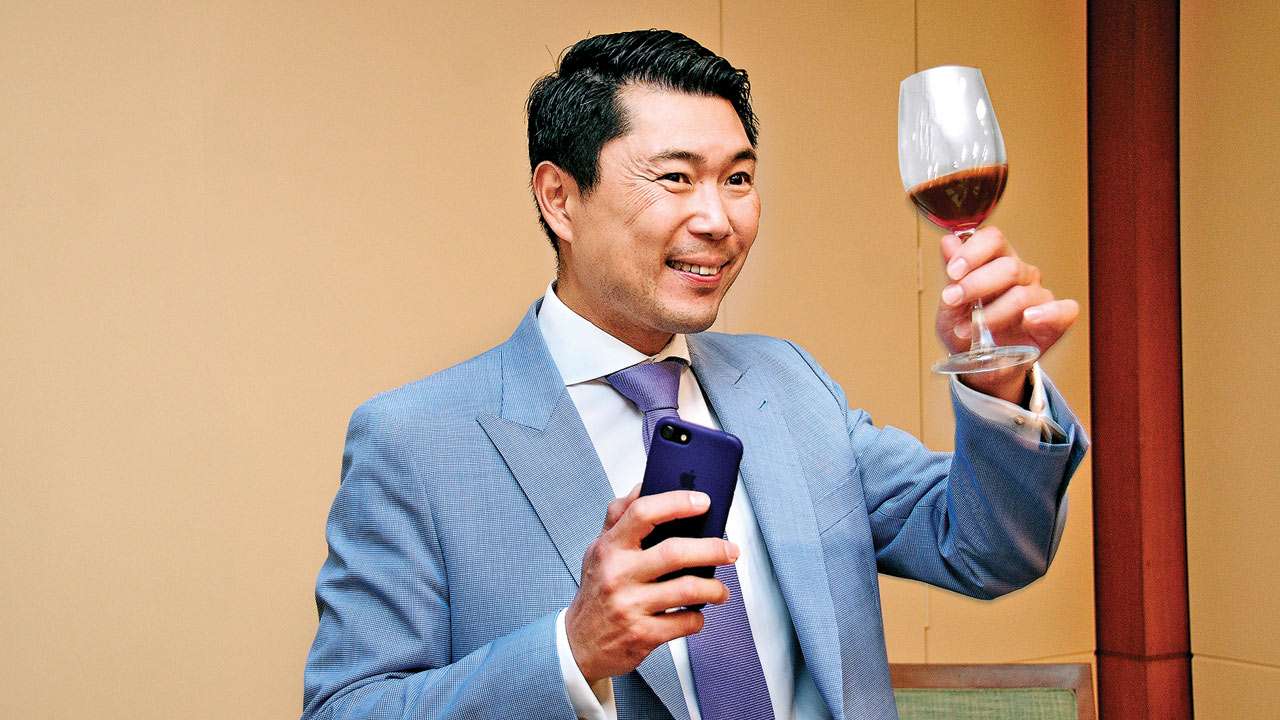
Extensive wine menus can get so anxiety-inducing that one might stick to ol' faithful port or choose a champagne at the discretion of the maître d'. But to recognise how well a wine pairs with the food or go down with your guests, you don't need a sommelier's powers to discern a Sauvignon blanc from a Chardonnay. Or know Syrah and Shiraz are the same wine, but the same-sounding petite Sirah is not. Or even pronounce those French names right – Merlots, Cabernet sauvignons, Pinot noirs and, in a rare encounter, Gewurztraminers. And, according to Simon Tam, Head of Wine at Christie's Hong Kong, it's also not so much about perfecting the 5 S' of wine tasting – see, swirl, sniff, sip and savour. Just the finish at the end of 'savour'.
"The only quality all winemakers judge and strive to produce is the length of the flavour – that lovely lingering flavour (aftertaste), also known as 'finish'. Its length is not measured in inches or centimeters, but in time.... Gentlemen," winks Tam, during the mini wine tasting session he held in mid-November in Mumbai's Christie's auction House at the viewing of paintings by the usual suspects of Indian Modernism – SH Raza, MF Husain, FN Souza, Ram Kumar. These went under the hammer at Hong Kong's Asian 20th Century & Contemporary Art autumn sale, late November.
Tam, at 50, has a 30-year career in wine business. Before taking up his current role in 2011, he owned a vineyard in Australia, nurtured the Chinese wine market as an educator and consultant, created an iPhone/iPad app, Flavour Colours to pair Chinese food with wine. He's now working on a book about the shape of flavours.
Dressed head-to-toe in shades of purple (read suit, tie, and phone cover), Tam largely dispelled the myth that choosing wine is subjective to individual tastes. He insists that you can pre-decide what wine to serve your guests. "Choosing wine objectively can put a sense of place, price, and occasion to wine. What you drink after a tennis match when dehydrated will differ from a romantic setting when you're looking into your wife's eyes."
Exactly why Tam feels a wine with a long finish is your safest bet when catering to a large audience or an eclectic meal. To prove this, at the Christie's Mumbai tasting session, he conducted a small experiment. It involved timing the finish of a white wine followed by red using the stop watch on your phone.
When we gulped the red, Tam starts the stop watch and a monologue, "Run your tongue inside your cheeks (your own preferably). Silky? Taste the saliva under your tongue. Can you taste the fruit? Soft, fruity, jam-like, and now it starts to fade a little... Now you're left with? Just dryness... The fruit has dropped away and you're left with the tannins. Stop the clock...34.99 seconds."
And the white wine, a Sauvigon Blanc from Somerset, France, that we'd gulped before the red, "tasted like a cold green apple on a hot summer's day" and left a 42.8-second aftertaste.
For Tam, 42.8-second and 34.99 second finishes are long enough to be considered a good wine. "When you run a marathon, you train yourself properly. With wine tasting, you have to train your mouth properly."
Before we tried red, Tam asked to rinse our mouths with red wine itself for a fresh palate. Not water. "Your mouth has a PH level of 7, which is neither alkaline nor acidic. Wine has a PH level of 3.1-3.2. After your palate gets used to this acidity, and you drink water, the wine you have after, especially if it's a red for its tannins, will feel extremely sour, harsh, even bitter and quite unattractive."
But Tam's most quirky take on wine are his definitions on the types of textures, which he puts in four categories. "Europeans talk about light-bodied and full-bodied, which, to me, feels like chicken soup and milkshake. You can look up the names, vintages, pricing, auction results, but it's all about whether you like milkshake with the fruits and flavour or without?" So, his own interpretation reads as light-bodied – thin chicken soup); medium-bodied – thick chicken soup; and full-bodied – milkshakes.
Tam thinks, medium flavour red wines to full bodied cabernets and malbecs wines work in India. Given the food pairing, wines too light will get missed out here. Also, what Asia on a whole lacks, is proper storage facilities, that is dust-and-vibration-free, as this changes the wine's composition, feels Tam, who even finishes a glass of 'bad' wine, "so I remember why I didn't like it."
Champagne is consumed the most world over because it's incredibly delicious and you can’t go wrong with it. I have 3,000 bottles of champagne in my own collection.
A wine doesn’t need to be expensive to taste good. Recognise that each price point delivers its own level of quality and you'll find a better value.
Serve/drink the older wine before the younger wine, a joy to experience an old vintage on a clean palate.
Break rules. In Burgundy region of eastern France, red wine is had before white. Pair an extremely spicy dish with dessert wine. Red wine with red food and white wine with white food doesn’t always work. Chicken is prepared in so many variations that colour of the wine alone can’t be the decision maker.
Preferably, buy wine directly from a château or domain, because quality gets compromised when it exchanges third, fourth, fifth hands while it travels.
Keep all the receipts and paperwork if you've purchased wine off an auction. Fastidious the collector, higher the return.